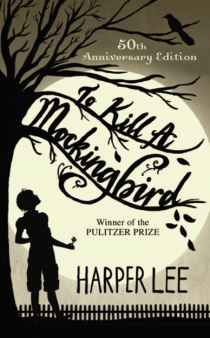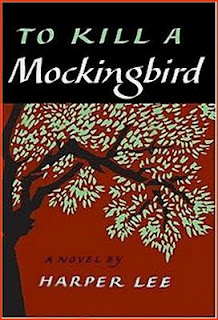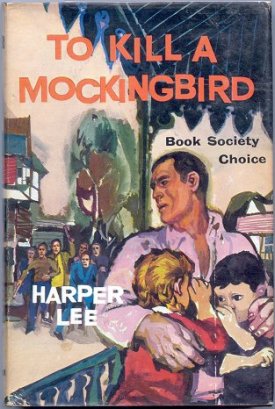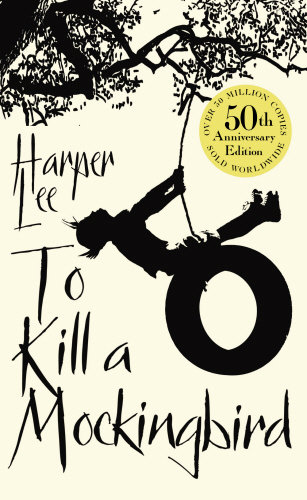Like any other form of artistic expression, there are ‘fad’ themes in writing. Without doubt supernatural stories are all the rage at the moment; full of vampires, werewolves and witches, the paranormal market has exploded following the success of authors like Charlaine Harris, P.C. and Kristen Cast, and (dare I say it) Stephenie Meyer. Post-apocalyptic and zombie fiction are also trending upwards. Some themes, however, are eternal. They’re never really forgotten about and revisited time and time again. Oppression, racism, love, childhood… They are themes that truly describe the human condition and when done well can be illuminating literary tour de forces. Perhaps none are as infamous as Harper Lee’s 1960 classic, To Kill a Mockingbird; a multi-faceted story as much about racism and prejudice as it is about childhood and what it means to grow up. Thrust upon most of us in high school English classes, there is many a cynic out there who thinks of Lee’s novel as overhyped and ultimately underwhelming. I on the other hand am a champion of this wonderful book, and I’d love to tell you why. Just a disclaimer, I’m writing in some detail and will no doubt give away spoilers, so readers beware.
The British first edition cover, 1960
For those of you unfamiliar with the novel, it is narrated by Jean-Louise aka Scout Finch, who lives in the fictional town of Maycomb in Alabama with her older brother, Jem, and their lawyer father, Atticus. The story is set in Depression-era 1930s and spans three years and at first glance appears to be a courtroom drama. Much to the disgust of the Maycomb residents, Atticus agrees to represent and defend Tom Robinson, a black man charged with the assault and rape of a white girl, Mayella Ewell. The undercurrent of racial hatred in town makes its way back to the Finch children, and Atticus forbids them from attending the trial. The inherently disobedient (but well-meaning, I assure you) children disobey their father and attend, watching from the coloured balcony. Without realising the significance of it at the time, the children (and indeed the entire court) witness a blatant disregard for justice as racial prejudice replaces rational thought and logical deduction. Despite being effectively cleared of any wrong-doing, the disgraced perpetrator of the crime seeks to avenge his humiliation by targeting the Finch children. An unsuspecting hero comes to the children’s rescue, but the events of the evening change the Finch family forever. Phew. That’s just at first glance.

One of the beautiful 50th Anniversary Edition covers, 2010
Perhaps what the novel is most famous for is the beautiful and poignant coming of age story that highlights how the inherent naivety of childhood can be quite rapidly removed. The story is told from the perspective of an older Scout, retelling how she viewed elements of her childhood, and reflecting on how the events of the Tom Robinson trial, unbeknownst to her at the time, changed her. Scout is highly intelligent for a 6-year old, as she is literate, but she is frequently scolded for her stubborn approach to life. She is confident in her own beliefs, and solves her problems by fighting. Essentially she is like most young tomboy girls. What she lacks in grace and poise, however, she makes up for with her massive heart and kind nature; a personality trait that inadvertently saves her father’s life. Over the course of three summers, Scout, Jem and their friend Charles Baker “Dill” Harris get into a suitably high level of mischief and develop a significant interest in Arthur “Boo” Radley, a reclusive Maycomb resident. Just as many children are captured by ghost stories, Boo is perhaps the closest a living person can come to being a ghost himself, which obviously only adds to the allure of imagining what he is like. Lee’s depiction of a kind-hearted but misrepresented soul is perfectly developed as the novel moves forward, and as fragments of Boo are uncovered, additional depth is given to the characters he engages with. But heroes are found in the most unlikely places, and the progression of Boo’s relationship with the children, particularly in the second half of the novel, is a heartwarming account of the richness that can be found once initial prejudices are overcome.
A second 50th Anniversary Edition cover, 2010
Adult themes are played out perfectly by being told through the eyes of a child, and I believe this is one of the main reasons why the novel has such a diverse following. To me it’s one of those rare novels that can teach me something new each time I read it; as though at certain points of my life, I have been able to take different things away from it. It is a highly moral tale, the unwavering morality of Atticus Finch is an absolute triumph, and yet the novel never feels like it is preaching at the reader, nor is it presenting a marked argument for choosing one side or the other. Rather, like any good court case, Lee lays out the facts as they are, presenting the reader with numerous viewpoints and compelling arguments, and ultimately letting the reader determine for themself what they would do if they were in a particular position. One specific passage is a standout for me, as Scout tries to reason with her father about his motivations for defending a man the entire town has already condemned:
“Atticus, you must be wrong…”
“How’s that?”
“Well, most folks seem to think they’re right and you’re wrong …”
“They’re certainly entitled to think that, and they’re entitled to full respect for their opinions,” said Atticus, “but before I can live with other folks I’ve got to live with myself. The one thing that doesn’t abide by majority rule is a person’s conscience.”
My personal favourite cover
The best books are the ones that stay with you long after you’ve read the final word. To say that To Kill a Mockingbird has stuck with me over the years is an understatement. It’s easy to get all high and mighty after reading a novel that deals with the unpleasantries of racial prejudice and declare that “I’m not like that”. But none of us are perfect, and whether we choose to admit it or not, prejudice exists to varying degrees in every one of us. Though I should hope I will never display traits of certain characters in the novel, I admit that sometimes I am like Scout in my naive views of situations. The big picture, Atticus-style reflection comes with age, and I hope that one day people will think of me as a good person if they speak of me. But Scout quips along the way that “fine folks are people with good sense who do the best they can with what they have”, and I suppose that’s all you can ask of someone, and indeed all you can ask of yourself. Moving past the “treat others as you wish to be treated” mantra, if you take stock of all you have and do the best with the knowledge available to you, you are indeed a fine person. It’s only when we choose to ignore our own shortcomings and place the blame on innocent parties that we start to walk the fine line between what we can do to get ahead and what we should do. At its heart, To Kill A Mockingbird is not a how-to guide for living a good life. Its message is simple: be accountable. Mistakes are an essential element of human nature. Do not force others to suffer the consequences for your own errors. Be strong, fight the good fight, and take the rest as it comes.




